More and more games now are adding modes where players no longer even need to play.
Players can simply open up the app, start a round, flip a switch, then put their phone down. The AI will make all their decisions. The AI will have all the fun while the player waits for the virtual reward at the end of the round.
At first glance, this is worrying. This turns the game into a Skinner box. Tap the button, wait, get a reward. Where is the fun in that?
Instead of making the core battle so boring that auto-mode is necessary, shouldn’t designers seek to add more depth to the battle?
No.
Focusing design on in-depth core game mechanics is a losing battle.
Focusing on making long-term decisions more interesting is a much better strategy for free to play games.
Battles are the Hook
In the RPG Genre, having an interesting battle mechanic provides the hook for the game. This is what draws players in and immerses them in the world. If I have no option of control, then this isn’t really a game.
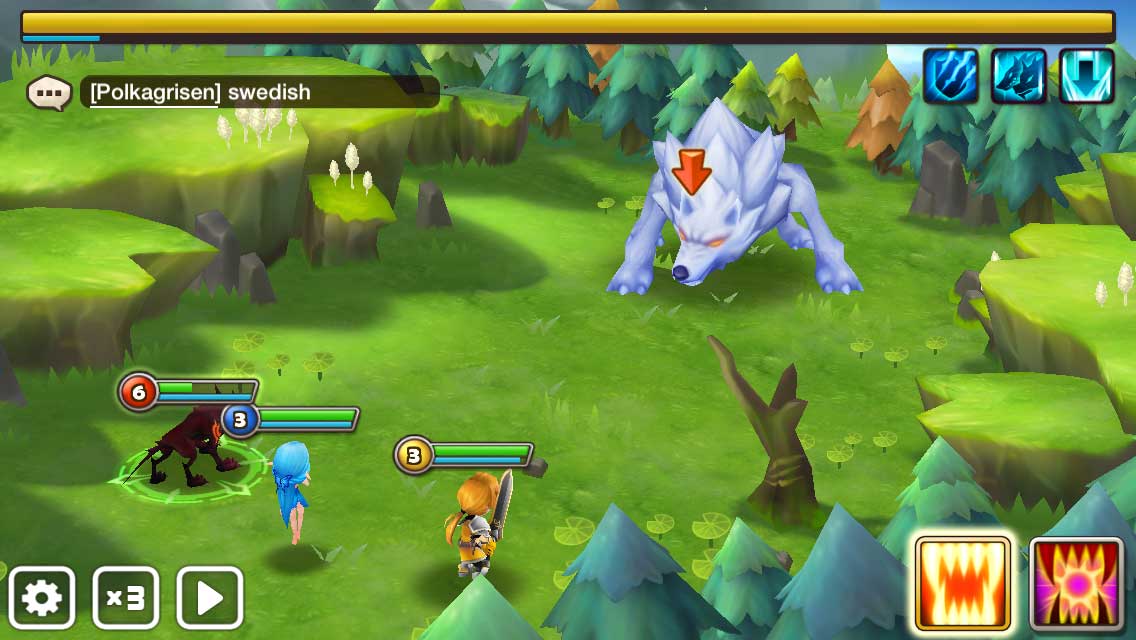
When a player starts a battle, they expect to make choices and see their impact. Having novel mechanics in the battle provides early players with a new experience that they have never had before. As seen above, in Summoner’s War, in the beginning, you have choices for each of your players of where they need to attack. This is engaging at first, but quickly goes stale. This isn’t the focus of the game.
Secondly, it really showcases the artwork. Your artwork sets the expectations right from the beginning. A player is only willing to invest in games that feel polished, exciting and professional. Making sure that players experience as much exciting battles in the beginning is important.
However, as they play many battles, inevitably the mechanic will get boring. Inevitably the artwork will get repetitive. There are few games in the history of game design that have ever managed to keep a core game mechanic interesting thousands of times repeatedly (ex. Tetris, Chess, Collectable Card Games). Especially in a non-multiplayer context, in a casual game, and even more in a mobile context where the interaction complexity possible is limited. In theory this could be done, but it would be incredibly difficult.
So how do you keep the gameplay interesting for the long haul while still allowing for a great initial experience?
Bitcoin Billionaire
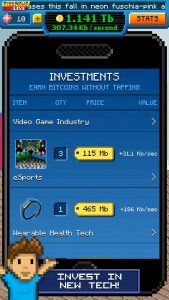
Bitcoin Billionaire is in a weird genre. I’m not really sure how to label it… It’s part simulation, but mostly an “Endless Progression” style game. Your goal is to try to collect as many Bitcoins as possible by tapping the screen.
Initially there is the appeal of just madly tapping on the screen. Each tap gets you 1 Bitcoin. You strum your fingers across your ipad watching your money go up. You’re so good at this!
But after about 30 seconds this starts to become a bore (also your fingers are getting tired!). So now the game starts to push you into making investments: earn Bitcoins while you’re not tapping.
What this does is ease the player away from a newly-boring core mechanic into something much more interesting: managing investments and optimizing the rate of progression. Bitcoin Billionaire has done an excellent bait and switch: you came for the tapping, but now you are addicted to buying income sources. Cookie Clicker, Make it Rain, Clicker Heroes and Bitcoin Billionaire are four excellent examples of games that have managed to ease a player from a boring core mechanic into something that is much more interesting in the long haul.
This transition is exactly what all games need to deliver for successful long term retention. So how do we add this to other genres?
Auto-battle is how its been added to the RPG genre. Eventually the game recognizes that making choices in the battle is no longer interesting. The bait and switch becomes making the choices outside the battle more interesting than the battle itself.
But Auto-Battle isn’t a trivial system to add. Like all design decisions it comes with benefits and consequences.
There are 2 questions to ask if an Auto-battle system will work with your game:
Session Design: Auto-Battle or Job system?
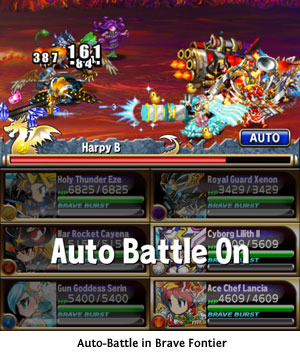
Auto-Battle as a system essentially means that a player will make a choice about which “dungeon” to enter, then leave their phone on and come back to it after a few minutes.
Is this valuable to your session design? Players just opening your app for long periods of time? It will effect your KPIs — your session length will go up. But is that really what you want in the design? Successful games push players to return to the game often throughout the day and focus on meaningful choices. So why demand that they keep the app open during the battle?
Job Systems in games have been around for quite awhile. They reached a peak with games like MafiaWars in the early days of Facebook. A player would send their units on Jobs. Tap a button, and the unit would be disabled for a limited time. When the time was up, the rewards for the action were given. This was a nice appointment mechanic that allowed players to opt-in to coming back to the game. If the game was only job systems however, the game grew stale. But what if a Job System replaced the need for auto-battle?
What may be more interesting is asking the player to make a choice: Do I send my fighters out without my control for 5 minutes, then return with the loot? Or do I think the AI will mess up this battle, so I should do it manually for the next 10 minutes? This way players can make a choice whether to end their session and come back later, or improve their chances of winning by playing the actual battles manually.
Is there enough depth outside of the battle?
If the game is really distilled down to a few taps each day this can get boring quickly.
Grinding for rewards and items is only fun when there is significant complexity and depth to collecting items.
By adding auto-battle in the game, this will put much more stress on your long-term meta mechanics. Do your players have enough interesting decisions outside the battle that will last for months?
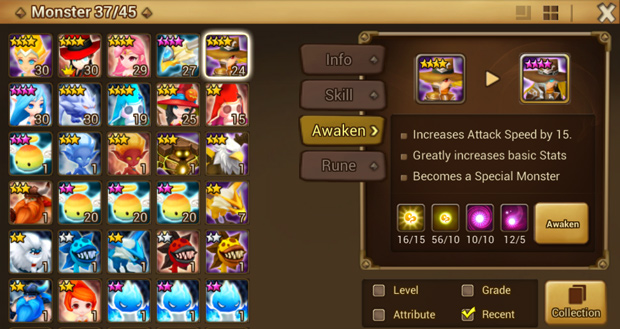
Summoner’s War has Relics to provide interesting decisions in how you upgrade your players. Brave Frontier has the boosting and fusing mechanic which provides years of collection and interesting long-term trade-offs. Many games have a very in-depth loot system which makes for interesting decisions choosing which gear to keep.
However, even with a strong loot system with collection, players need an indicator of progress. They need to be immersed in your setting, story and game. Having an auto-mode is great, as long as eventually players will be pushed to an epic boss battle. A battle that surprises them, challenges them, and maybe even progresses the story. This will be necessary wrapper around the grinding that makes it all worth it. These auto-battles end up building anticipation to something new and exciting for the player.
In the end auto-battle lets players focus on the choices and decisions that matter to them, no matter what stage of the game they are in.
Content pacing is the core of proper long-term retention in free to play. In order for players to stick around for months and years, you need to ensure that they are consuming your content at a pace that is healthy. A Free-To-Play designer’s main responsibility is to maximise the player’s enjoyment using the minimum amount of content necessary. In order to do this, many games try to influence the player to replay the same content over and over again. This has coined a term in free to play: “Grinding”: when a player repeats the same content or level many, many, many times in order to uncover a reward.
This has been embedded in gaming since the Arcade. Each time a player played an arcade game, they had to play through all the same content over and over again. They played that same content until they finally progressed farther than they had before. In this way, the early game content was played over and over again hundreds of times, but the late game content was an achievement. For developers, it meant that they could create a relatively small amount of content, ramp up a difficulty curve and this would gate players effectively from reaching the end of the game too quickly.
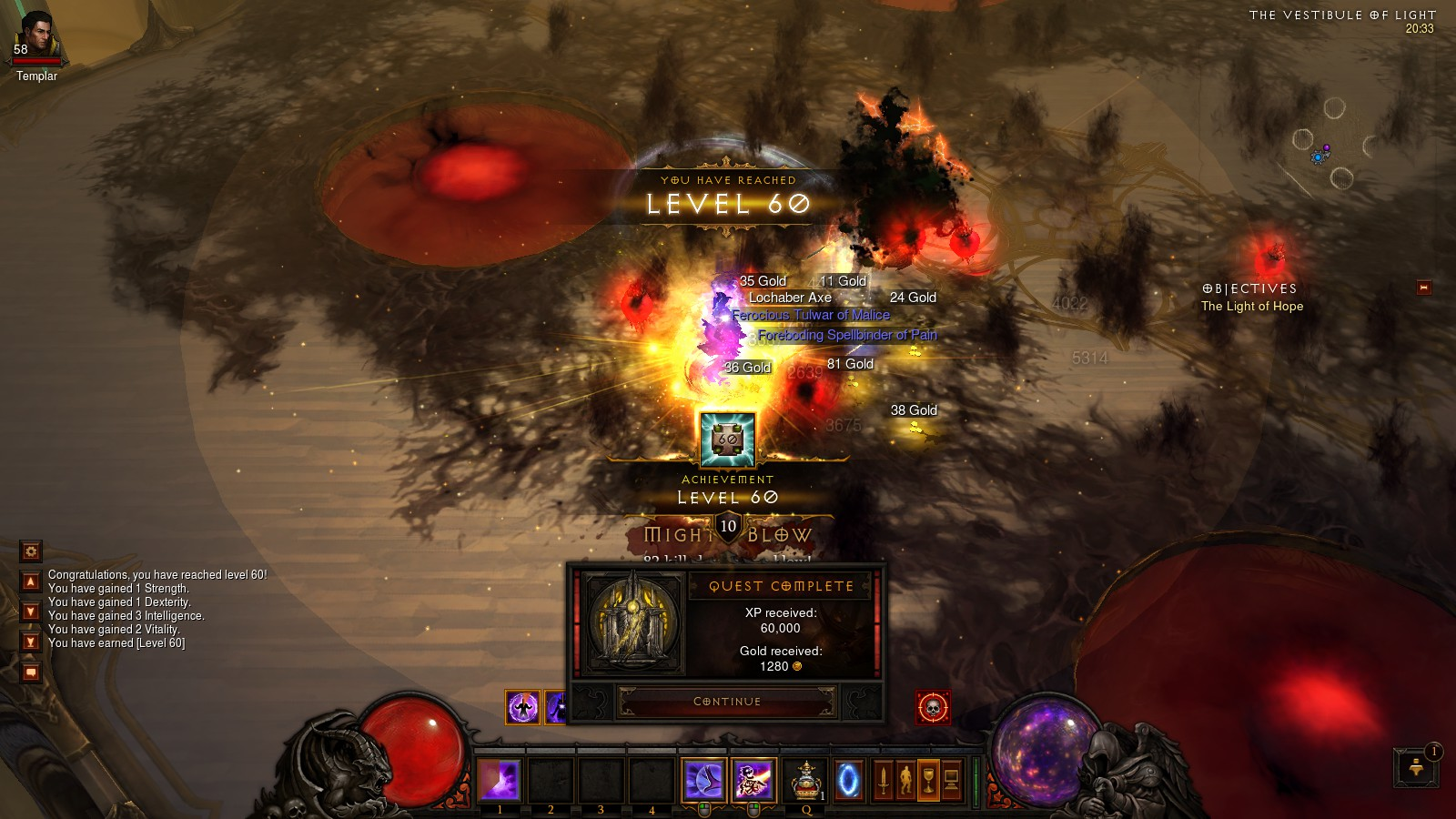
How does Diablo 3 get away with endless grinding?
During this current era of games, some games just get away with incredibly repeatable content. Diablo is the perfect example. Players are happy to play and replay the same levels, the same bosses, the same content over and over and over again to search for metagame goals. Players seek to find the best loot, build up the best gear, to defeat impossibly balanced challenges in the late game.
But when coming up with new game designs for Free-To-Play, designers can hit issues when trying to stretch out their content. When designers start asking players to repeat over previous content, players always push back.
Why do I need to play through things I’ve already beaten?
Why can’t I just push ahead?
Players start leaving the game because it feels too “grindy”. Or some players believe the difficulty is beyond anything they are capable of because they don’t realise they need to grind to beat the boss. Players see behind the veil and realize that it’s “play this old content for x times or pay” and instead, they choose to leave. For good reason: your system is not interesting or exciting.
There are three core issues that I find can easily be fixed to make grinding more expected:
#1: Players can see a long grind ahead of them
The negative feeling of a grind comes in when a player believes they know exactly how many sessions they will need to play in order to progress. This is usually the precise moment when most players pack up and say this game is too tedious. It’s true: This is when the game becomes a bore. Players are just going through the motions to get an extrinsic reward (ex. currency, item, etc).
To fix this you need to add luck to your progression. Ensure the player can not fully see the time required to progress. Players should always feel a bit of hope: with a bit of luck and some skill, they can progress quickly over the next checkpoint.
To add more luck to your progression systems it’s about adding randomization to your rewards. Create a loot system. Allow the player to randomly get items which speed up their progression (ex. better weapons, better perks). Ensure the player is exposed to this system early and often. This will allow them to gain hope that the grind (even if long) could get much faster at any moment. The more they play, the higher their chances are that they get lucky and progress fast. This also becomes a moments of pride for the player — they are very likely to share their story with other players if they feel they are “cheating” the game by finding rare loot that no one else has.
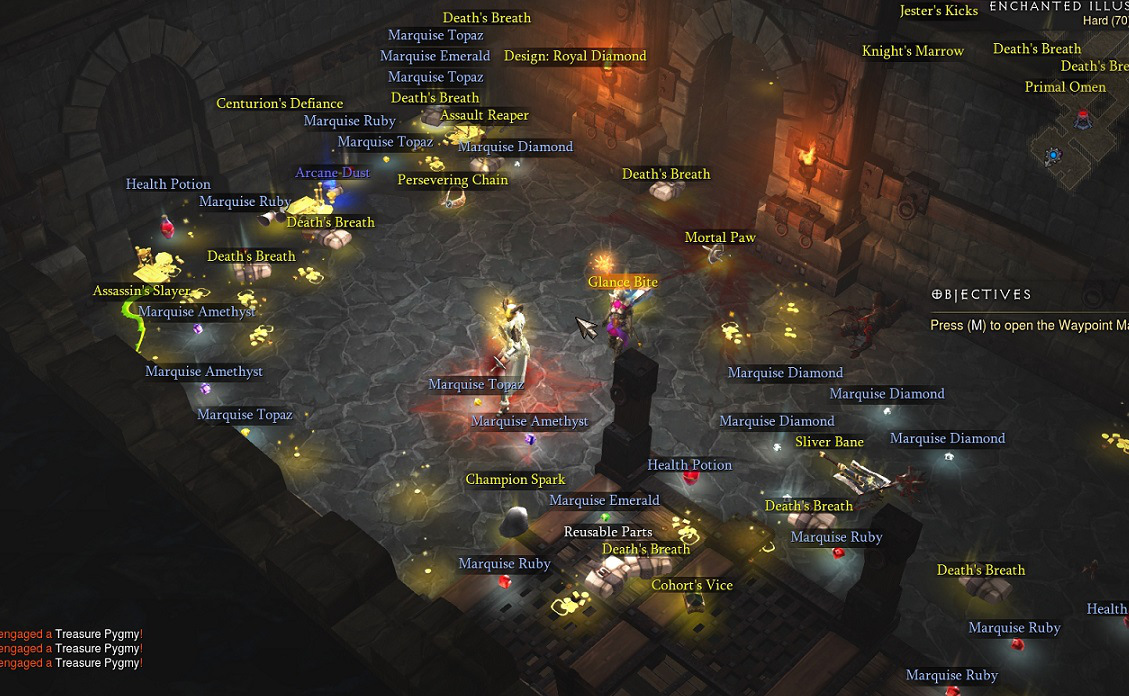
Adding Loot systems, like Diablo 3’s, is a great way to randomize a player’s progression speed.
There are other ways to make progression more exciting. You can also randomize the sources and sinks of your currencies more. If a building cost fluctuates (goes on sale during the week) then players will progress quickly and feel smart for taking advantage of a one-time offer.
Randomizing reward amounts (ex. randomly giving large sums of currency in a round of gameplay) can make the player save up and hope for a lucky round that will really push their progression forward quickly.
If the player can’t see their progression pace so easily, they will hold on to hope that their luck will change. They will feel really smart when they’ve finally collected an epic weapon. Most importantly they will continue to return to the game because the game does not feel like a grind.
#2: Players are not aware they need to grind
Most free to play games put a lot of emphasis on stats. When a player attempts a difficult level, their results depend on whether they equipped good enough gear and how well they played. In Clash of Clans, the whether or not you raid the base depends on how high your level of invading troops are as well as your ability to pick where they start.
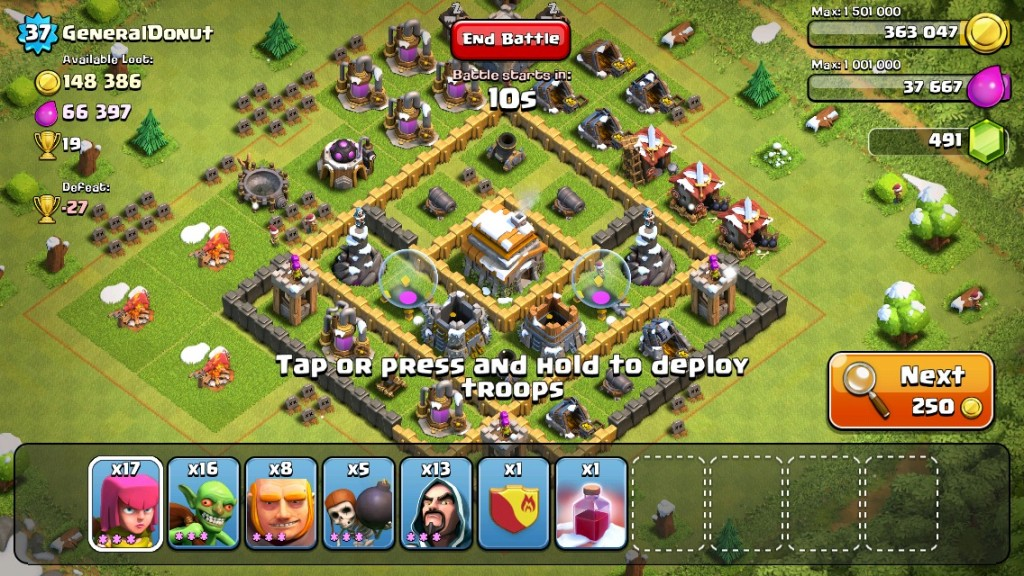
Clash of Clans has a balance between Stats and Skill. Placing players in the best possible way won’t guarantee victory unless you’ve got the best troops.
But for a player, figuring out which one of those two was incorrect at the end of a level is very difficult. Did I just not upgrade enough? Or was it where I placed my players?
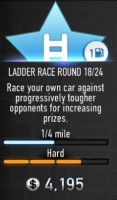
Some games make this equation really really opaque. Players can’t tell whether they need to upgrade more, or if they just pound away at a level they’ll eventually beat it. This can result in frustration in two ways: players endlessly attempt a level in an effort to beat it when they clearly can’t. Or they believe their skill has no impact and leave the game because it’s too rigged.
CSR and Deer Hunter have attempted to fix this with giving indication before the battle: make sure players are aware that their skill level needs to be very high to win this race, and show that as they upgrade these bars go down. This effectively separates the skill vs stats showing the player before they’ve even played what the chances are they’ll win. Allow the player to bet on their own skill, but give some transparency into how much of the result is actually dependent on their skill!
#3: Grinding is not expected
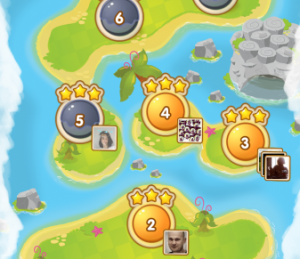
Jelly Splash progression is very simple — beat the next level. Jelly Splash has no stats in its progression. It doesn’t need grinding. Why? Because it has so much luck in the level design that players are happy to play the same level over and over and over again in order to beat it. Players are content to grind the same level because of near misses. Players are happy with this — the world map (or Saga map) gives them such clarity as to their progression that it works.
But Saga maps aren’t okay for every game. Players have played with these maps for long time, back since Super Mario on the Nintendo. A World map’s primary purpose is to show off your achievement of progress, and show you how far you need to go. Going back to previous levels? Why would a player ever do that?
Yet in many mobile games, this is how it is done. They provide a world map, and the only way to progress was to grind on the previous level enough times until you had the necessary gear to move forward. This is the only choice, and it gets tiring quickly. There has to be a better design than this.
Again, CSR was the pioneer here. They realised that a world map sends the wrong signals to players. If the only choice your world map is providing is whether to go for the next level or grind the previous level, then you really have too simple of a choice. Instead CSR opted for this view:
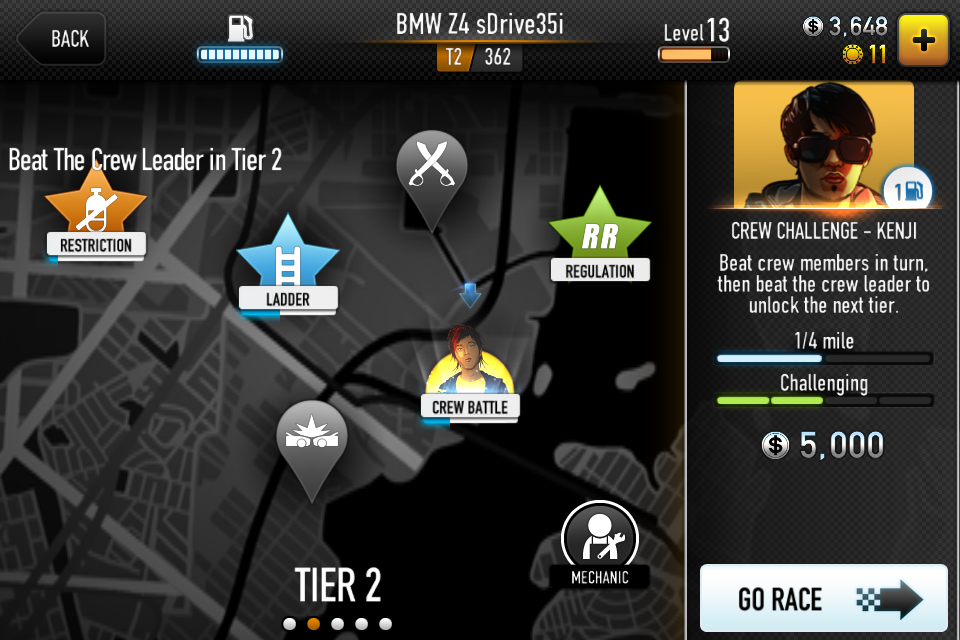
By making multiple modes the focus on the map, CSR has made grinding expected.
The key here is that players have multiple modes with different risk/reward which they can choose from. Players can choose based on their skill and their sessions how to optimize their grind. Players can feel smart about the choices they make. Bosses are only one of many options on the map, rather than the full focus of the screen. So players now expect that they will have to race in other modes before they are fully ready to take on the boss. If grinding is expected, then rethink your map design.
To make players feel good about grinding:
- Add luck to your progression so it’s not always clear how quickly you’ll progress
- Ensure players understand when they need better stats versus improved skill
- Make sure your map sets the expectation that grinding is necessary
In the end players will have a proper expectation of your game. They will start making choices to optimize their grind and feel smart about it. When players feel smart about choosing to grind, then you’ve solved the grinding problem.











